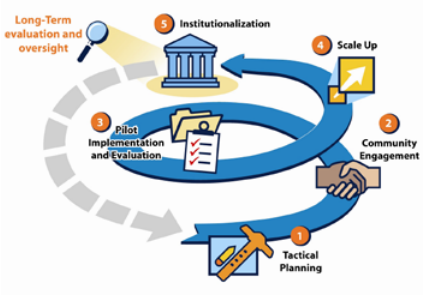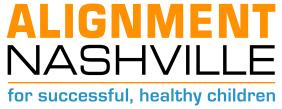ALIGNMENT'S UNIQUE, INTEGRATED TOOLSET:
PRINCIPLES, STRUCTURE, PROCESS, AND TECHNOLOGY
PRINCIPLES
Alignment Nashville is guided by the following Principles, which were defined by the organization’s founders in 2004.
- The outcome of our work is to enable children to be successful.
- Alignment with MNPS priorities is for the welfare of the community's children.
- The work is designed to support the MNPS Strategic Plan.
- The work is generational.
- The work is focused on those who most need support in order to be successful.
- While we are targeting academics we are focusing on the whole child.
- The work is comprehensive and multifaceted approach designed to enable student success.
These operating principles ensure that our work is focused on systemic change, or change that involves new ways of applying resources to underlying causes. Systemic change happens when an outcome or goal has been attained; the result is either that the cause of the problem is eliminated, or programs, policies, funding streams and/or services are permanently altered to reduce the impact of the problem on a long-term basis.
Examples of the Principles in action include:
- Social Emotional Learning (SEL) – the five SEL competencies, as defined by the Collaborative for Academic and Social Emotional Learning (CASEL), are woven into the work of each and every Alignment Team, demonstrating our commitment to Principle # 6 by focusing on the needs of the whole child.
- Each of AN’s Long-Term Outcomes is supported by a multitude of A-Teams; for example, the long-term outcome “Increase high school graduation” is supported by Pre-K, High School, and Adolescent Sexual Responsibility A-Teams and more, demonstrating our commitment to a comprehensive and multifaceted approach (Principle #7).
- All of the AN school-focused A-Teams are directly supporting the strategic plan of Metro Nashville Public Schools (MNPS), demonstrating our commitment to Principle #3.
STRUCTURE
The Alignment Structure provides varying levels of involvement and leadership, engaging a wide range of stakeholders in different ways. This structure also provides sustainability, ensuring broad involvement that insulates the organization from changes in leadership in any one stakeholder group.

PROCESS
Alignment Nashville’s design and implementation Process ensures that Alignment Teams are making progress toward systemic change. Alignment Nashville staff, who are ICA-trained facilitators and experts in the collaborative process, guide the A-Teams through each phase of the Process. Each A-Team first creates a Tactical Plan (1) to align to common goals to address a community issue, then uses the Invitation to Participate™ (2) process to align resources and engage the broader community in the effort. The A-Team provides oversight for implementation of the initiative (3), and gathers data to determine the impact and need for scale-up (4). Finally, if the effort has achieved the desired impact and systemic change, then it is institutionalized (5) either in the community or the school district.
TECHNOLOGY
ComCoefficient (ComCo) is the Technology tool developed by Alignment to power the Principles, Structure and Process. ComCo is an online portal that allows A-Team members, community partners and Alignment staff to collaborate, measure and report progress, capture knowledge, and more.
